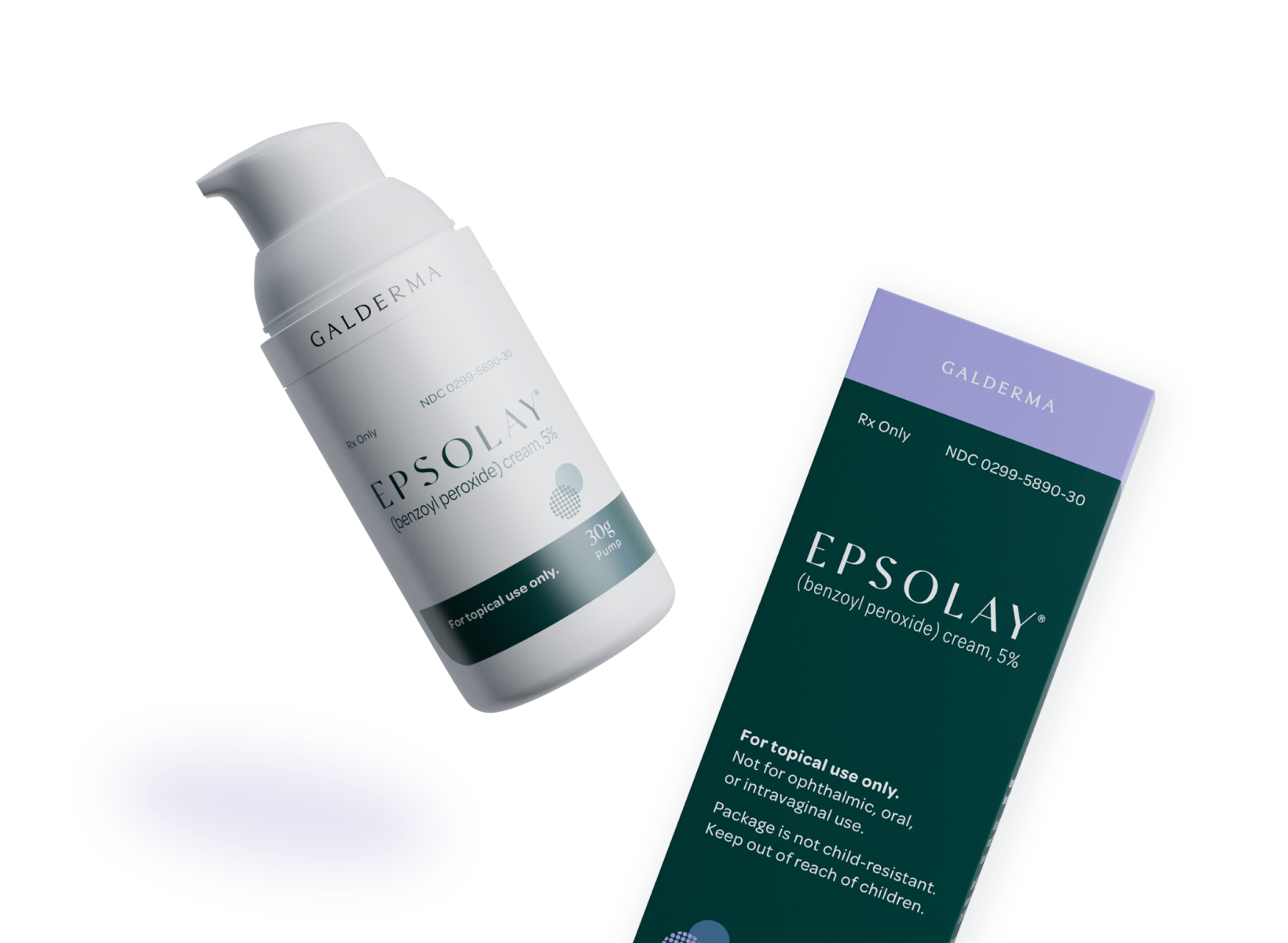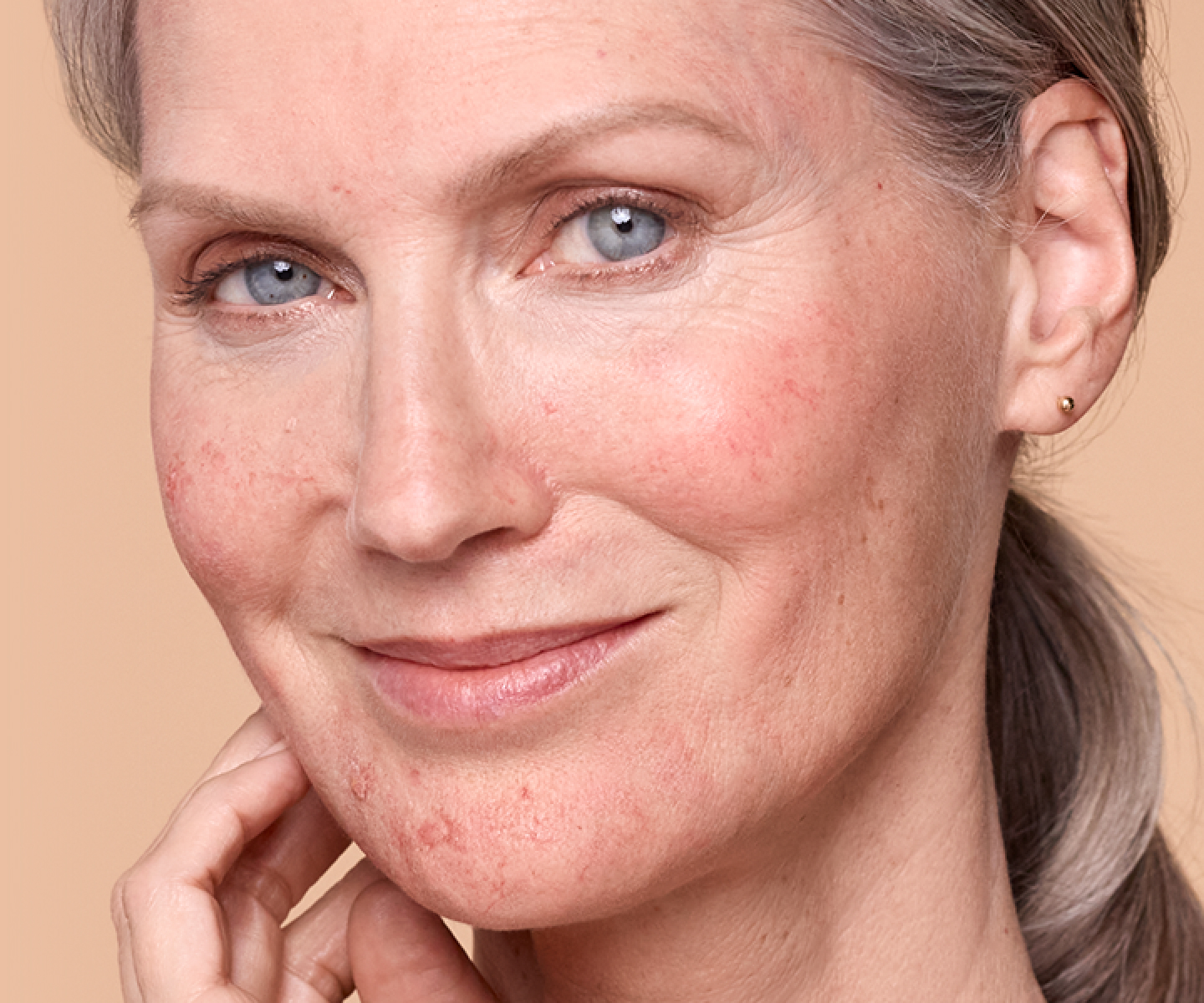
Rosacea treatment with a delicate touch1

The difference is in how it works
EPSOLAY cream is the first topical treatment to combine BPO with innovative microencapsulation technology to treat the bumps and blemishes of rosacea.1,2
-
WHY BPO?
The active ingredient in EPSOLAY cream is BPO. It is an effective antibacterial ingredient that has been used in other products to treat skin conditions like acne. Until now, using BPO to treat rosacea might have caused skin irritation, but microencapsulation technology has helped change that.2,3
-

-
WHAT DOES MICROENCAPSULATION DO?
EPSOLAY cream was designed with high-tech microcapsules that control the release of BPO on your skin.1,2
HOW DOES IT HELP?
These microcapsules gradually release BPO to relieve rosacea while remaining tolerable, so you can use it daily, or as prescribed.1,2

*Certain limitations may apply. Click here for program details.
†Galderma CAREConnect Patient Savings Program is only available for commercially insured or uninsured patients. Patients who are enrolled in a state or federally government-run or government-sponsored healthcare plan with a pharmacy benefit are not eligible to use the Galderma CareConnect Patient Savings Card. Any claim under the Program must be submitted by participating pharmacies to one of the Administrators of the Program.
IMPORTANT SAFETY INFORMATION
Indication: EPSOLAY® (benzoyl peroxide) Cream, 5% is indicated for the treatment of inflammatory lesions of rosacea in adults. Adverse Events: The most common adverse reactions (incidence ≥ 1%) in patients treated with EPSOLAY Cream were pain, erythema (redness), pruritus (itching) and edema (swelling), all at the application site. Warnings/Precautions: Patients using EPSOLAY Cream may experience hypersensitivity reactions, including anaphylaxis (acute allergic reaction), angioedema (rapid swelling), and urticaria (hives). If serious hypersensitivity reaction occurs, discontinue use of EPSOLAY Cream immediately and seek medical attention/initiate appropriate therapy. Skin Irritation/contact dermatitis may be experienced, including erythema (redness), scaling, dryness, and stinging/burning. Irritation and contact dermatitis may occur. Use a moisturizer and discontinue EPSOLAY Cream if symptoms do not improve. Avoid application to cuts, abrasions, eczematous, or sunburned skin. EPSOLAY Cream may increase photosensitivity, sensitivity to ultraviolet light. Minimize or avoid exposure to natural or artificial sunlight (tanning beds or UVA/B treatment). Use sunscreen or protective clothing when sun exposure cannot be avoided. Discontinue use of EPSOLAY Cream at the first evidence of sunburn.
You are encouraged to report negative side effects of prescription drugs to the FDA. Visit www.fda.gov/medwatch or call 1-800-FDA-1088
